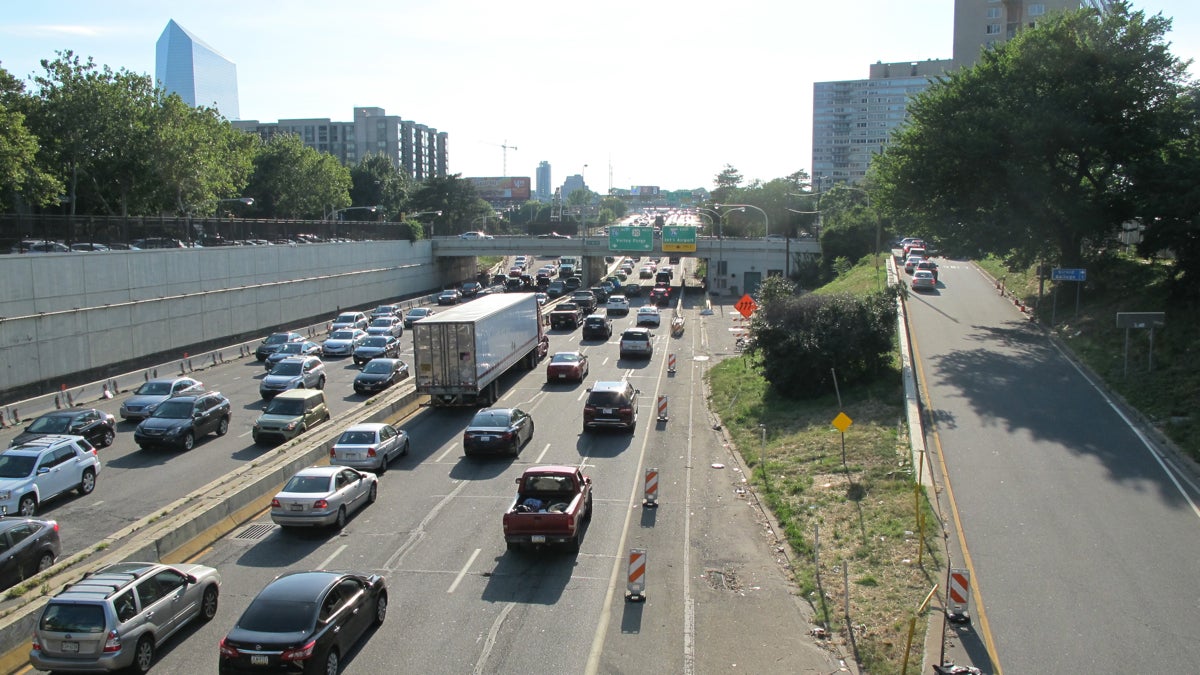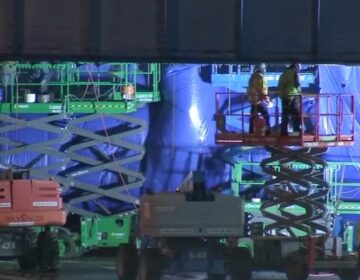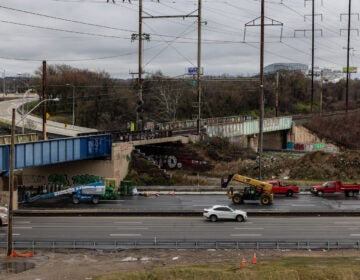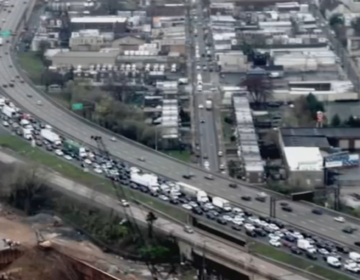The downside of highways: Philly Fed economists research freeway revolts, barrier effects
Researchers at the Federal Reserve Bank of Philadelphia found that between 1950 and 2010 highways slowed growth in income, population, and land values in city centers.

Vine Street Expressway (Ashley Hahn/Plan Philly)
This article originally appeared on PlanPhilly.
—
No one should be denied a good taco, but the Vine Street Expressway has often deterred Jeffrey Lin from visiting a nearby taqueria for lunch.
The Federal Reserve Bank of Philadelphia economist channeled that frustration into a working paper about the negative effects of highways on cities.
“Just the experience of getting there is so unpleasant,” he said. “That was kind of one early inspiration for thinking what are the effects of highways on cities.”
Lin and senior economist Jeffrey Brinkman took a broad look at how highways have contributed to suburbanization, and the subsequent decline of U.S. cities during the 20th century.
They found that between 1950 and 2010 highways slowed growth in income, population, and land values in city centers, while having the opposite effect in outlying areas.
Highways also contributed to air and noise pollution, and reduced access between neighborhoods split by freeways. Lin said the decline in quality of life “was an important factor in pushing people out of cities in the ’50s, ’60s and beyond.”
Lin and Brinkman also examined the possible impact of “freeway revolts,” in which communities rallied together in protest of highway projects in their neighborhood. They researchers offer visual data that shows the deviation of routes between the initial plan and a finished highway.
The closer the highways were to the city center, the more they digressed from their proposed routes. Lin said that may have been a result of neighborhood activism.
“Despite their eventual extent, in the mid-1950s the freeway revolts were largely unanticipated by planners, builders, and even later critics of the Interstate program,” the authors write. “Planners had an immature understanding of the negative side effects of cars and limited-access roads in mature cities.”
Lin and Brinkman propose that projects that bury or cap highways could be beneficial to city centers, especially in reducing the “barrier effects” that cut neighborhoods off from one another.
Philadelphia has its own history with these conflicts. The Vine Street Expressway was protested when it was initially proposed and a recent study from the Union of Concerned Scientists found neighborhoods bordering the expressway are exposed to a kind of particulate pollution linked to respiratory illnesses and heart disease.
But despite the study’s inspiration by Lin’s frustrated quest for tacos, Philadelphia is not specifically mentioned in the Philly Fed study, which focuses instead on Boston, Chicago and Detroit.
Lin said he “hopes that in some follow-up work we’ll be able to do something specific to Philly.”
The paper has been submitted to a journal for peer review.
WHYY is your source for fact-based, in-depth journalism and information. As a nonprofit organization, we rely on financial support from readers like you. Please give today.





